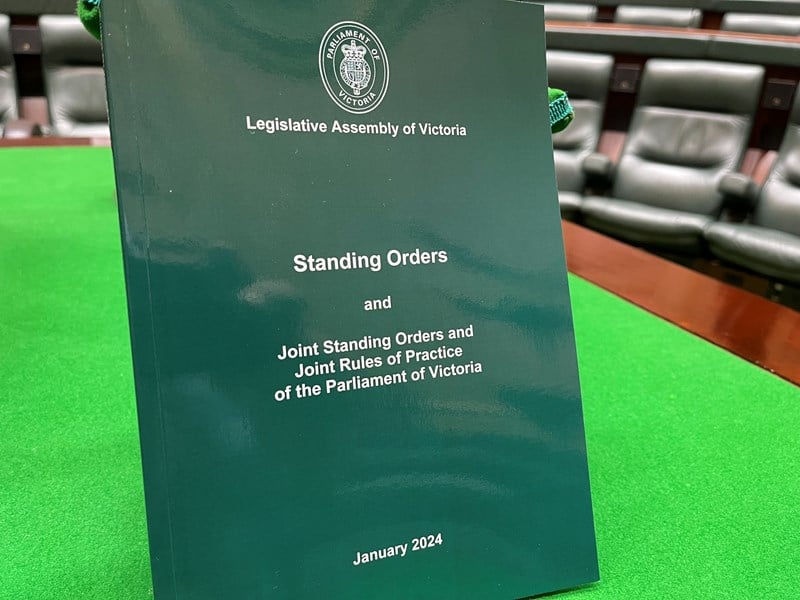Standing Orders

Standing Orders are the permanent rules of procedure for the Legislative Assembly, Legislative Council and their committees. They are the rules that must be followed and are used to manage the work of the chambers and their committees.
These rules of procedure can be embedded into any classroom when students are considering two or more opposing viewpoints, or debating topics, to ensure that a safe and orderly environment is maintained. If you want to make a more spirited debate, you can add chants of “hear, hear!” or “shame, shame!” when students agree or disagree with any points made. This resource is designed to be used flexibly, you may want to utilise all of the Standing Orders in your classroom or only one element.
Writing a bill
If you are wanting to reflect a true parliamentary debate, members of parliament do not debate questions, rather they debate bills that include how, when and under what circumstances a potential law would apply. Members of parliament may also debate the specific clauses within a bill (this happens in an optional stage of the Second Reading).
Below is an example of how a question maybe turned into a bill.
Question: Should Australia Ban Mullets?
Would become
Bill title: Hair Regulation (Ban the Mullet) Bill 2024
Bill clauses:
- Only celebrities can sport ‘fashionable’ mullets
- Hairstyles be regulated where the difference in length between the sides and back is no more than 5cm
- Penalties will be applied to hairdressers found to be providing mullets, $500 fine for first offence, $1000 fine for second offence, jail for third offence
- Individuals sporting a mullet must have a hair cut by an approved hairdresser.
Students then discuss and debate the practicality and implementation of each point. For example, what makes a ‘celebrity?’ What is fashionable? Can any one sport ‘unfashionable’ mullets? During this process students may vote to amend different aspects of the bill. The majority of students (50% + 1) must agree to vote to change the clause and 50% + 1 must agree to pass the bill once the amendments are made.